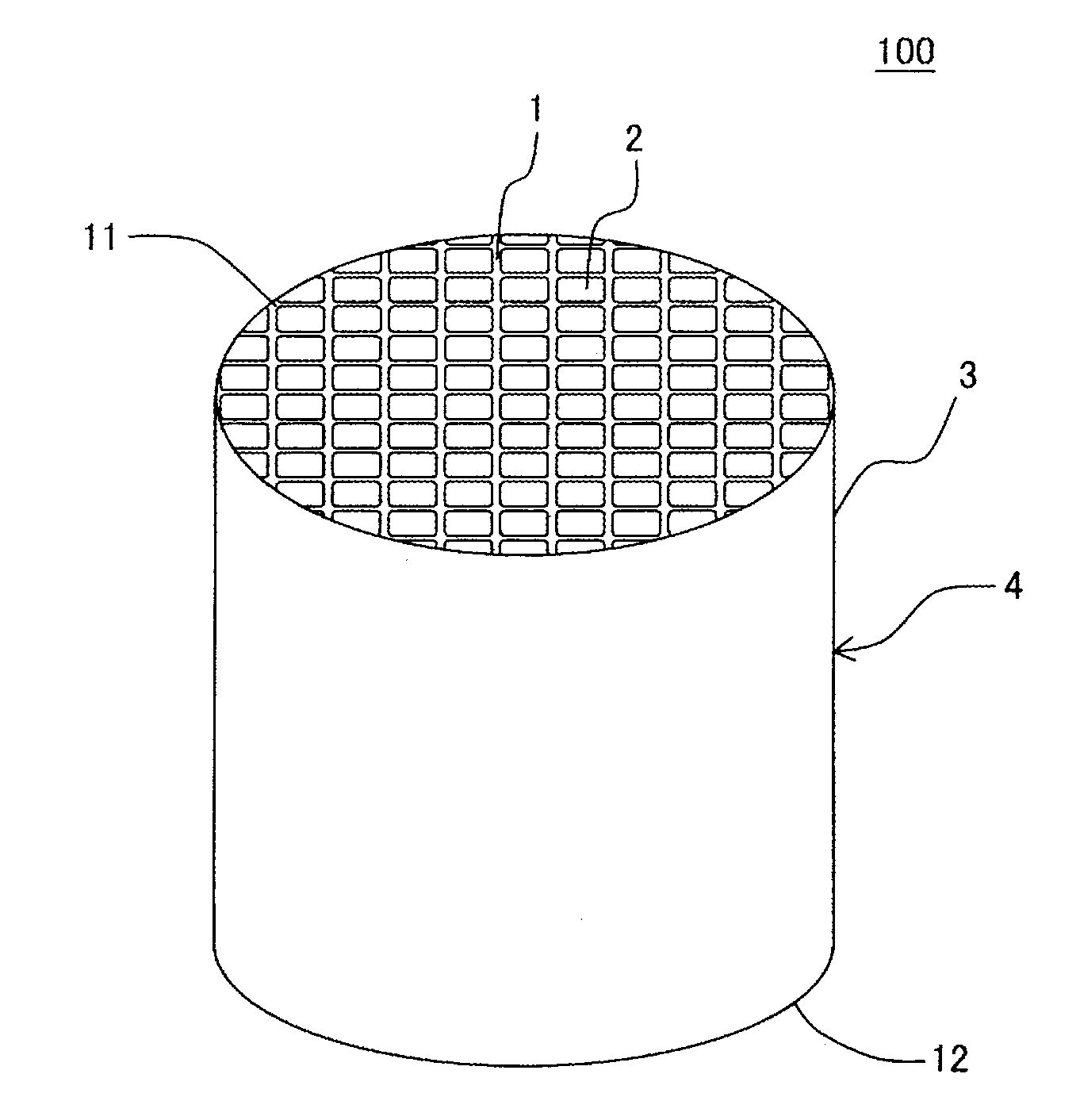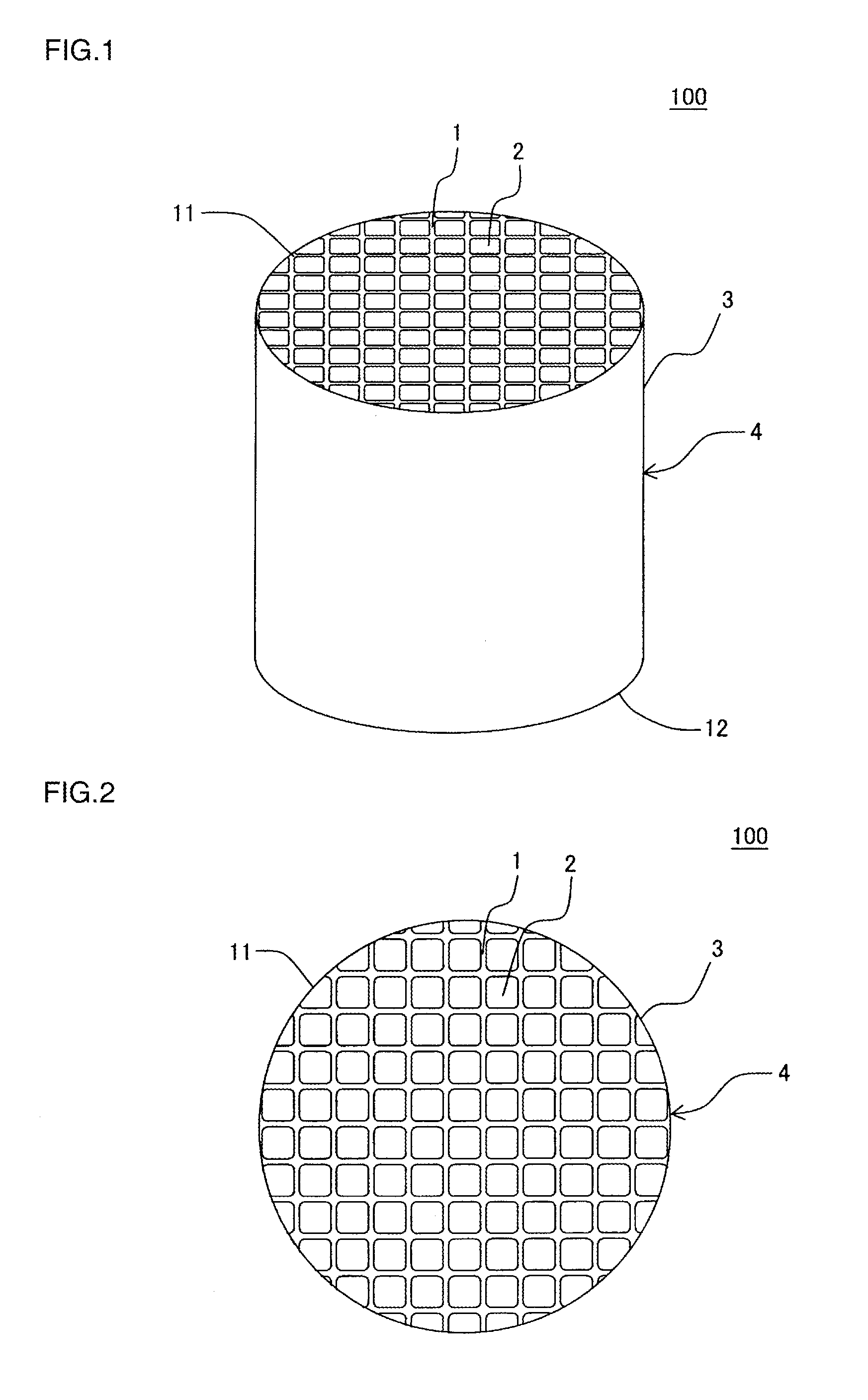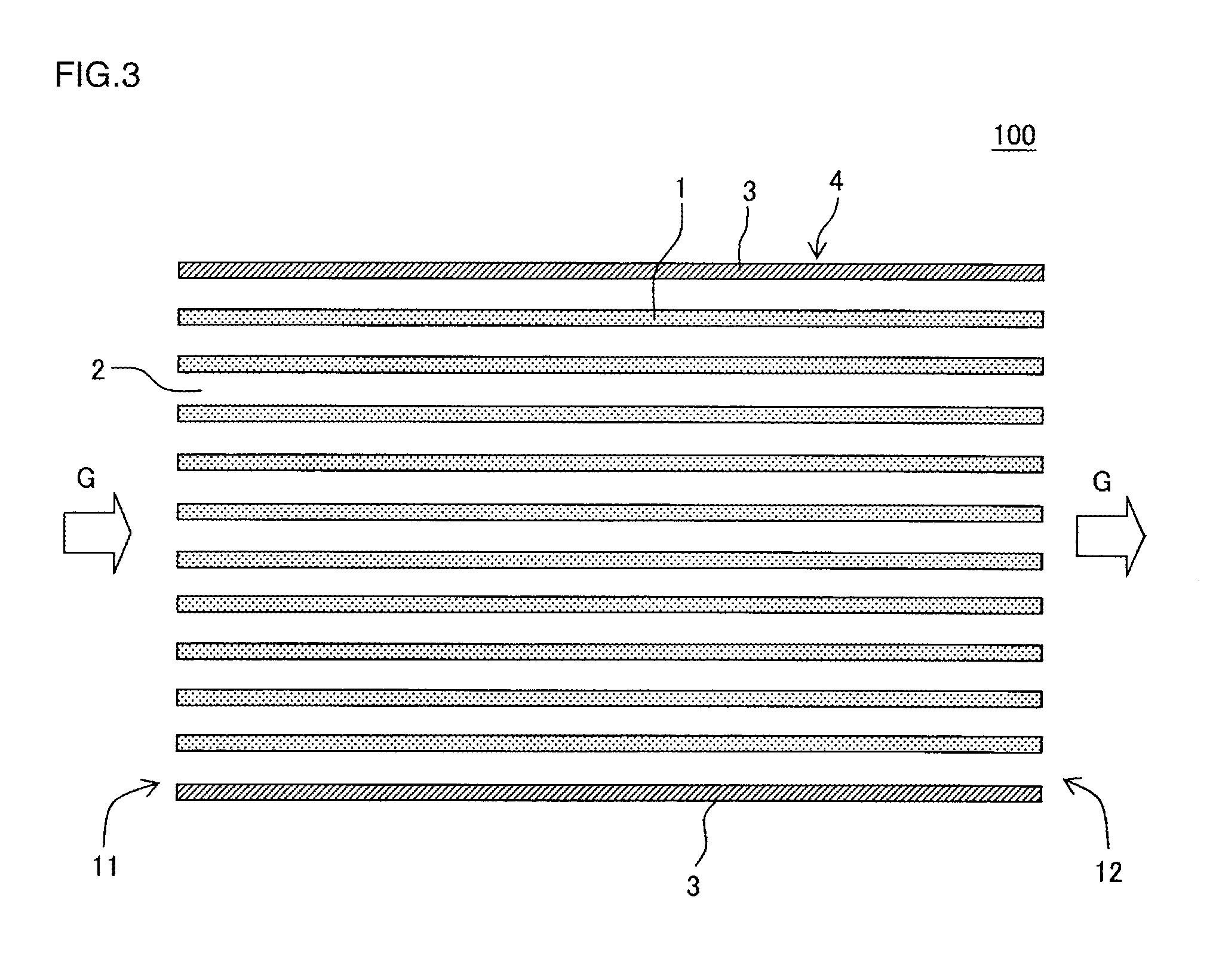Honeycomb structure
a honeycomb and structure technology, applied in the field of honeycomb structure, can solve the problems of insufficient effect and limited improvement on wettability, and achieve the effects of less likely to be damaged, high thermal conductivity of this porous body, and high strength of the porous body
- Summary
- Abstract
- Description
- Claims
- Application Information
AI Technical Summary
Benefits of technology
Problems solved by technology
Method used
Image
Examples
example 1
[0091]Example 1 first prepared a forming raw material for fabricating a honeycomb structure by the following method. Silicon carbide (SiC) powder, which becomes the refractory aggregate, and raw material powder for generating bonding material were mixed at a ratio of 70:30 (volume ratio). Thus, “mixed powder” was fabricated. The silicon carbide (SiC) powder had the average particle diameter of 14 μm and the specific surface area of 4000 cm2 / cm3. As the silicon carbide (SiC) powder, which becomes the refractory aggregate, the mixture of the powders with two kinds of average particle diameters classified by the sieving was used. The silicon carbide powders of two kinds of average particle diameters were powder classified with the JIS standard sieve with meshes of #800 or more and powder classified with the JIS standard sieve with meshes of #1000 or more. As the powder for generating bonding material, powder that contains talc of 45.1 volume %, kaolin of 32.8 volume %, and aluminum hyd...
examples 2 and 3
[0107]In Examples 2 and 3, the aggregate raw material average particle diameter (μm), the content ratio of Na2O (%), and the aggregate raw material specific surface area (cm2 / cm3) were changed as shown in Table 1. Except for that, the honeycomb structure was manufactured by the method similar to Example 1. Example 2 used the silicon carbide (SiC) powder of the average particle diameter of 13 μm as the refractory aggregate. Example 3 used the silicon carbide (SiC) powder of the average particle diameter of 11.5 μm as the refractory aggregate. Table 1 shows the aggregate main constituent, the bonding material main constituent, the bonding material proportion (%), the aggregate raw material average particle diameter (μm), the sintering aid, and the content ratio of Na2O (%) in Examples 2 and 3. Table 1 shows the firing temperature during manufacture (° C.), the thickness of partition wall (μm), the cell density (cell / cm2), the porosity of partition wall (%), the diameter of end face of...
PUM
| Property | Measurement | Unit |
|---|---|---|
| particle diameter | aaaaa | aaaaa |
| temperature | aaaaa | aaaaa |
| mass % | aaaaa | aaaaa |
Abstract
Description
Claims
Application Information
 Login to View More
Login to View More - R&D
- Intellectual Property
- Life Sciences
- Materials
- Tech Scout
- Unparalleled Data Quality
- Higher Quality Content
- 60% Fewer Hallucinations
Browse by: Latest US Patents, China's latest patents, Technical Efficacy Thesaurus, Application Domain, Technology Topic, Popular Technical Reports.
© 2025 PatSnap. All rights reserved.Legal|Privacy policy|Modern Slavery Act Transparency Statement|Sitemap|About US| Contact US: help@patsnap.com



